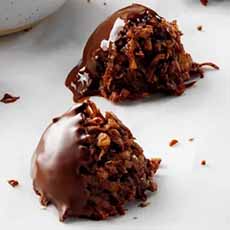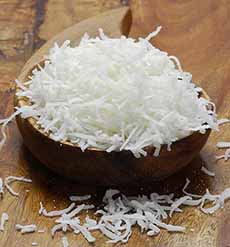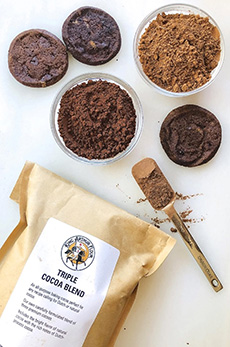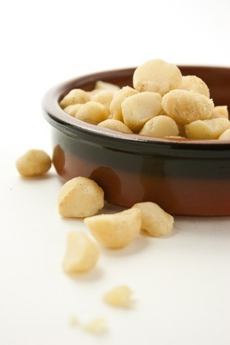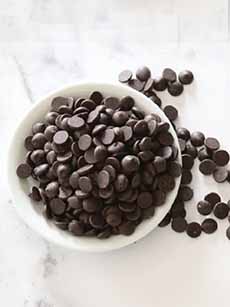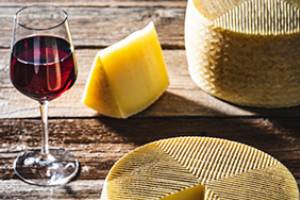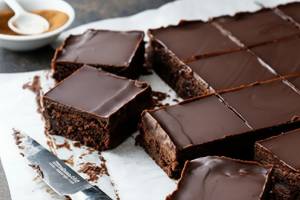Weekend Baking: Chocolate Macadamia Macaroon Cookies
|
Why is it that we only think of baking macaroons around Passover? This cookie, composed of coconut and egg whites, was created by Italian Jews for the eight days of Passover, because it has no flour or leavening (which cannot be eaten during the observance). The recipe was introduced to other European Jews and became popular as a year-round sweet. The recipe takes only 35 minutes from start to finish. Bake them now and store them in an airtight tin. They also freeze well. And they’re gluten-free! > The year’s 44 cookie holidays > The 11 basic cookie categories. > The different types of cookies: a photo glossary. > The year’s 44 cookie holidays. Thanks to Taste Of Home for this recipe, which was developed by Darlene Brenden, Salem, Oregon and tested by Taste of Home Test Kitchen. Prep time is 20 minutes and cook time is 15 minutes. We recommend making a double batch, because these little bites will disappear quickly. Our personal indulgence is to use fine baking chips or chocolate bars rather than packaged chocolate chips; although we do use Guittard chips regularly. 1. PREHEAT the oven to 325°F. In a large bowl, mix the first 6 ingredients. Then stir in the egg whites, corn syrup, and vanilla and blend well. 2. DROP the dough by the tablespoonful onto greased baking sheets, 2 inches apart. Bake until the cookies areset and dry to the touch, 15-20 minutes. 3. COOL in the pans for 5 minutes. Remove to wire racks to cool completely. 4. DIP half of each cookie into melted chocolate, allowing the excess to drip off. Place on waxed paper and let stand until set. Coconut macaroons will last up to 1 week stored in an airtight container. You can freeze them for up to 3 months by placing them in layers separated by parchment or wax paper. There are two basic types of cocoa powder, natural, which is untreated, and Dutched, which is treated with alkalai (photo #3). Dutched chocolate, or Dutch process chocolate, is a deeper brown color, which leads most people to think that it is richer and has more chocolate flavor. However, the alkali added to Dutched cocoa changes the pH of the cocoa to make it milder in flavor than natural cocoa, not deeper. In 1828, Coenrad Johannes van Houten, the same engineer who developed the hydraulic press that created cocoa powder by crushing the nibs to separate the fat (cocoa butter), developed the process of treating the nibs with alkaline salts (alkali)* to neutralize the acidity and bitterness prior to crushing. Van Houten was Dutch, so the process became known as Dutch process, or Dutching. You should not substitute these two types of cocoas in baking when a recipe specifically calls for one type. While both will make a nice cup of cocoa, the leavening in a recipe will vary because of the differing acidities. Recipes that specify the type of cocoa powder are have been designed for that type. Using the wrong type can affect the rise and texture of the baked good. It the recipe is not specific, like the one above, you can use either. It doesn’t matter in the macaroon recipe, because there is no leavening (baking soda, baking powder) to react with the acidity. Natural Cocoa Powder |
|
|
|
CHECK OUT WHAT’S HAPPENING ON OUR HOME PAGE, THENIBBLE.COM. |
||
